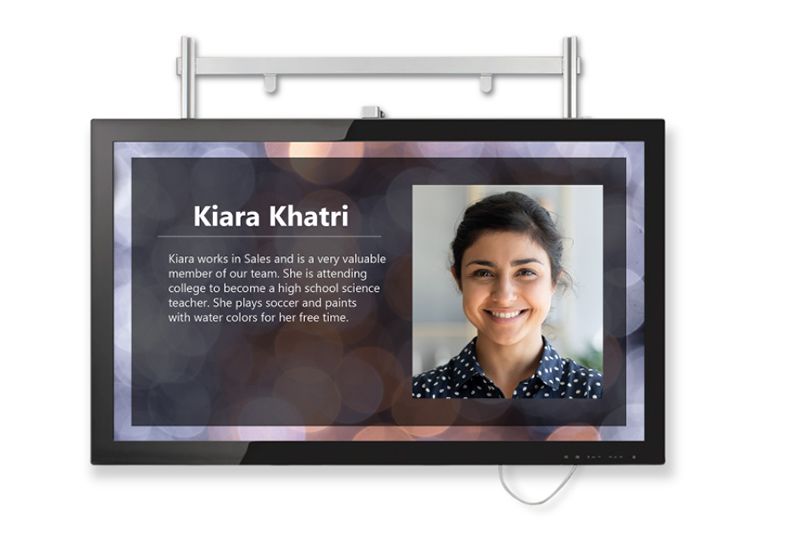Dressing up in slacks, going into the office, and working from nine to five has been on a decline for a decade now. The COVID-19 pandemic has continued to push organizations, including contact centers, into functioning as a hybrid workforce model. This model offers virtual and in-office working options which promotes flexibility and the opportunity to still be in social work situations at a safe distance. But hybrid-workforce models can feel chaotic – with agents always coming and going from home to office, having desks in two places, and trying to keep track of “when” they should be “where.” So it’s only natural that one of the greatest challenges for those implementing a hybrid model is keeping employees engaged as well as connected to shared and individual goals.
In 2020, most contact centers quickly made the decision to send employees home with no long-term solution of what was to come next. Now many organizations have brought some employees back into the office while others stay home to work. They are quickly realizing that the hybrid workforce model is here to stay because the truth is, between managers and agents, the love of working from home is the #2 factor contributing to high Employee Net Promoter Score (eNPS).
Many contact centers are looking for help to navigate this new territory and create an agent engagement strategy that will work in 2021 and beyond.
Engagement is ever-so-important because according to McKinsey and Company, engaged and satisfied call-center employees are:
- 5x more likely to stay than leave within a year
- 4x more likely to stay than dissatisfied colleagues
- 16x more likely to refer friends to their company
- 3x more likely to feel extremely empowered to resolve customer issues
Employee engagement can have serious effects on your bottom-line and customer loyalty. If you’re looking for guidance on how to engage your agents, we'd recommend starting with the six pillars of a hybrid contact center workforce engagement strategy listed below.
Pillar 1: Company culture
Company culture is crucial to agent engagement – regardless of the work model – because for many employees it’s the reason they chose to work for an organization in the first place. Even before COVID-19, contact centers had a difficult time keeping a strong and consistent culture because of the notoriously high turnover rates that plague the contact center industry. It’s hard to build a strong culture that agents buy into when are leaving every year!
So, you can imagine now that they have geographically scattered employees, contact center leaders are faced with an even greater challenge to cultivate a strong company culture.
Elements of a strong culture include purpose, ownership, community, and recognition.
So how can you incorporate these elements into your agent engagement strategy?
Purpose:
Employees want to be a part of something greater than themselves. So, it's important you help them connect what they do with the impact of their work.
It’s also important to allow agents to grow and progress into other roles within the contact center and organization that interest and excite them. You can foster a growth culture by having open and regular conversations about their future goals and interests and help prepare them for where they want to grow in the future by providing access to virtual and in-person trainings.
Having a weekly or monthly training to improve hard skills and soft skills, along with career-growth teachings can help contact center agents feel like they are progressing and growing. While this may seem like an impossible task with people at home and those in the office keeping their distance, it’s as simple as a video call. Producing live events and recording them for those who could not attend will promote a safe and reliable way for everyone to get the same information and trainings.
- Hard skills, also known as teachable abilities, can range from technical proficiency in products/services to learning how to code.
- Soft skills can range from leadership trainings, communication techniques, time management, and empathy training. Soft skills are related to how you interact with people, solve problems, and manage time.
From an agent’s perspective, career growth opportunities in the contact center may seem limited – but that’s not the reality. That’s why it’s important for leaders to have conversations with agents about how they can gain leadership positions or promote to the next level within the contact center, earn a pay raise, or make a cross-functional move outside of the contact center. When agents know their leaders have a vested interest in them growing and “sticking around,” they are more attentive and engaged.
These types of trainings can also show that your leadership team is interested in its employees, even though they don’t see or speak to them every day. Putting time and energy into your employees shows them that they are cared for. J.W. Marriott once said, “If you take care of your employees, they will take care of your clients, and your business will take care of itself.”
Ownership:
When employees are given ownership and autonomy, they feel empowered to make an active and enthusiastic commitment to their work. You can promote ownership by:
- Getting employees involved in goal setting
- Giving agents access to dashboards with data important to them
- Delegating authority, not just work
- Encouraging employees to solve their own problems
- Acknowledging employees for going the extra mile
Community:
Creating a sense of community can consist of anything from sending birthday wishes through your messaging application, having skill-sharing sessions, or hosting socially distant meetups. Whatever you do, just make sure you are actively helping employees feel connected and cared for.
Celebrate the wins!
Contact center work can quickly feel mundane and unmotivating if there is not any type of excitement about small wins or big victories.
If your agents are working both in-office and from-home, a tool like Wallboards can be very beneficial in providing instant recognition and celebration. Wallboards can be displayed on big TVs in the office or through a URL on an agent’s desktop.
Pillar 2: Rewards and Recognition Program
According to an ICMI study, the number one factor that contributes to agent satisfaction is rewards and recognition.
There are many ways to engage employees. Within a hybrid workforce model, it’s best to have an automated strategy that can reach both at-home and remote workers equally and consistently. Using a gamification platform, like CXone Performance Management, can remove the stress of running manual games and provide a sustainable, dynamic way to reward and engage agents.
By using gamification to create challenges around KPIs within teams, against one another, or against oneself; employers see happier agents. Challenges among teams drive healthy competition that engages rather than enrages employees.
For example, one NICE customer who uses Gamification within CXone Performance Management said, “CXone’s gamification is amazing; we use the challenges to engage our agents. For instance, agents get virtual coins whenever they earn a solid 100 on a quality score. We have large monitors stationed throughout the contact center so everyone can see the winners’ names and their avatars. The agents love it.”
Gamification solutions within products like CXone Performance Management provide a virtual marketplace that managers can customize. Then agents can use coins won in games to redeem rewards in the marketplace. Some reward ideas include:
- Extra paid time off (days or hours)
- Three-month streaming service subscription
- 30 minutes of mentoring from the CEO
- Company Swag
- Movie theatre tickets
- Seasonal products (outdoor grill, cooler, or kayak)
- Gaming consoles like Xbox or PlayStation
- Gift cards
- Toys or stuffed animals for kids
Pillar 3: Goal Setting and Tracking:
In a hybrid workforce model, it’s easy for employees to veer off track if they don’t have clear objectives to meet, and don’t have their supervisor’s physical presence as an ongoing reminder to stay on task. Creating goals with rewards attached to them can make contact center work feel more positive and doable. Whether agents be at-home or in-office, equipping them with individualized dashboards that display real-time data can help give them a sense of confidence and fulfillment.
Not only are personal goals important for agents, but company-wide goals can also help them feel a sense of belonging no matter where they land on the map. Giving agents access to team or company statistics via wallboards and dashboards in-office and at-home will help each agent feel embraced by the company.
Pillar 4: Team Building Activities
Team meetings are a great way to build morale amongst agents throughout the contact center. Creating endless meetings with boring presentations can get tedious and defeat the purpose of creating a unique culture. Here are some ideas that you can include in your next team meeting to keep your employees engaged and attentive. We recommend splitting up into new groups every week so that agents can meet and speak with people who they have never seen or met before. Conducting these meetings with a combination of virtual and in-office employees is important.
- Fast Recall Mission - a quick prompt with all different and unique questions to discover more about your co-workers.
- Murder Mystery Meeting - split up into small teams with clues to see who can solve the mystery. Have a small prize for the team who wins.
- Virtual Happy Hour - send out a stipend or box of mixed drinks or food to each employee and have a Friday afternoon meeting where you can sip, snack, and enjoy coworkers, all from the comfort of your couch.
Pillar 5: Employee Feedback
More than anything employees want to be heard. Even if it is a simple request that is fulfilled, like getting a new flavor of coffee in the breakroom or taking the time to ask how their personal lives are, agents will feel validated and understood. By sending out agent engagement and feedback surveys periodically and considering the feedback heavily, morale will build. Supervisors should be equipped with the tools to create, send, and analyze surveys for their teams. If you’re not quite sure what types of surveys you should send out, here are some ideas:
- Job Satisfaction Survey
- Agent Engagement Survey
- Mental Health Survey
- Manager Evaluation Survey
- Psychographic Survey
- Post-Event Survey
Each survey can offer insight into what needs improvement during times of uncertainty. Working in a hybrid model makes it difficult for managers to have visibility into problems as they arise. Surveys can provide the insight and clarity you need to understand agent concerns and act on them before they become a bigger problem.
Pillar 6: Consistent Communication
One key to happy employees is having consistent internal communication. Creating trust can feel impossible if everyone is saying different things and following contrasting rules. The same message must be stated across all platforms so that agents can trust leadership and feel safe in their work environment.
Here are some ideas of how companies can create consistency in the workplace:
- 1-on-1 communication
- Create an open-door policy
- Plan to have managers in-office on different days so they see each employee when they come into the office
- Zoom call “office hours” posted for employees to reach out to managers during that time
- Managers create a schedule to check on each individual employee
- Communicate big picture goals frequently and send timely updates about smaller objectives.
- Teach all new hires your industry lingo and terms as well as your company lingo and terms
- Send company-wide announcements to everyone
Applying these key engagement pillars can lead to improved employee morale, lower turnover, improved performance, and increased customer satisfaction.

A hybrid workforce model isn’t going anywhere anytime soon. Agents are loving the flexibility and comfort it offers. But like anything, it comes with its own unique challenges as you try to keep employees engaged in their positions. If you’re unsure of where to start, the six pillars of a hybrid contact center workforce engagement strategy listed above would be a great place to start.
If you need additional help implementing those pillars, a solution like CXone Performance Management can do a lot of the heavy lifting for you. And for more tips on what success looks like in a remote or hybrid work environment, check out this webinar in which industry experts discuss what contact centers can do to fill gaps in technology, operations, and processes – and prepare for the post-pandemic world.





